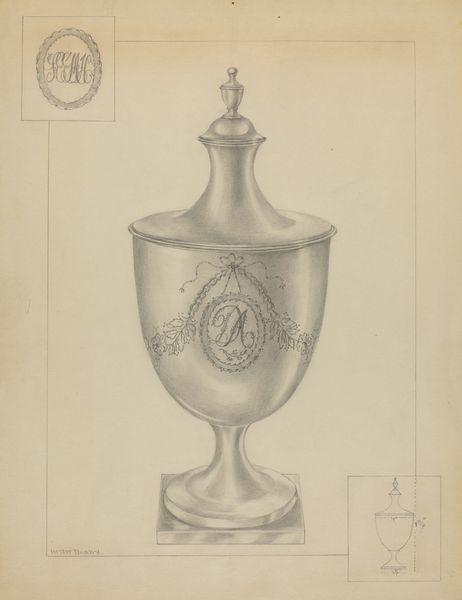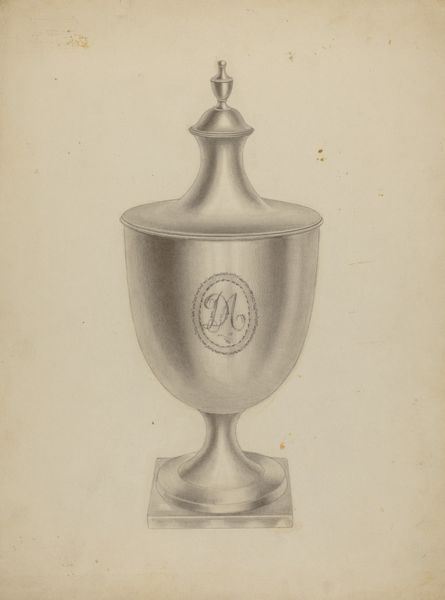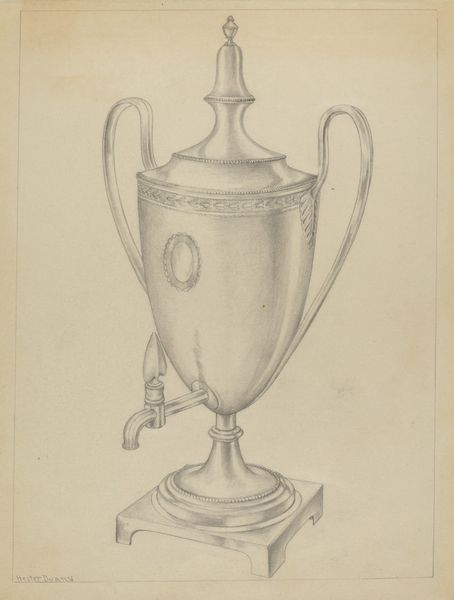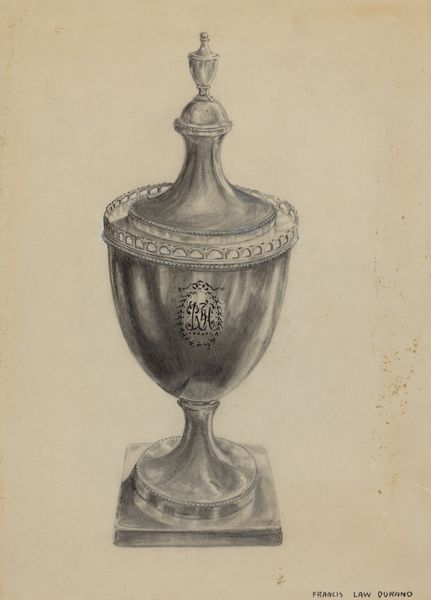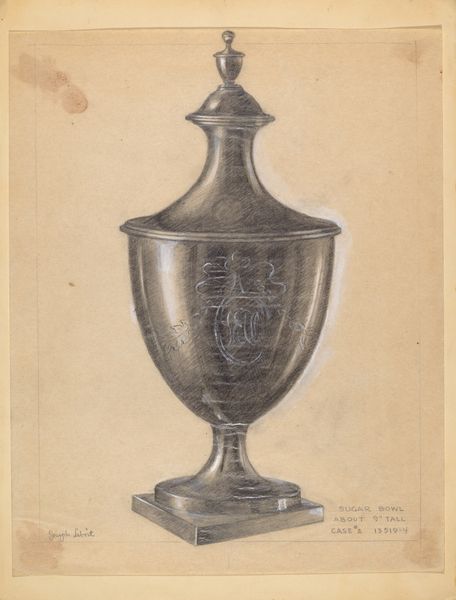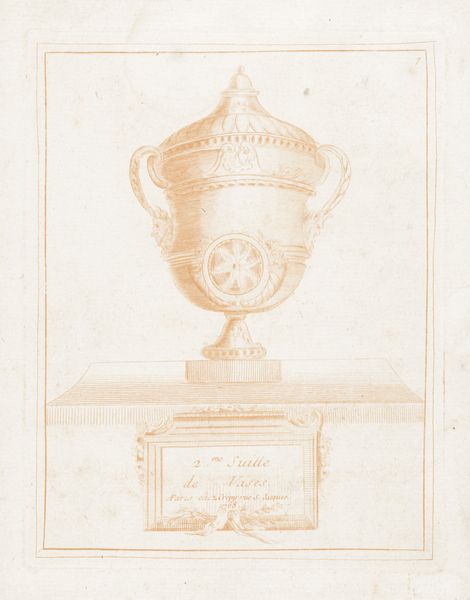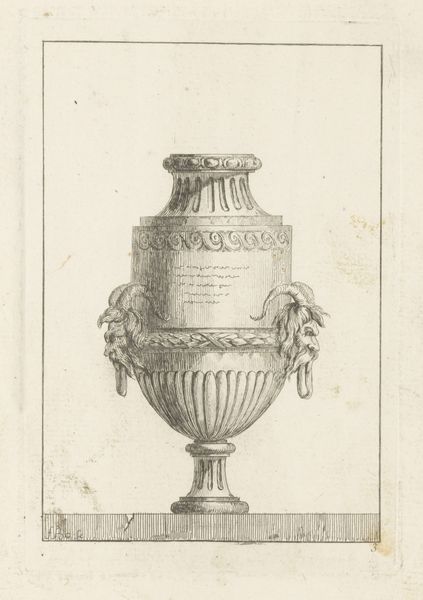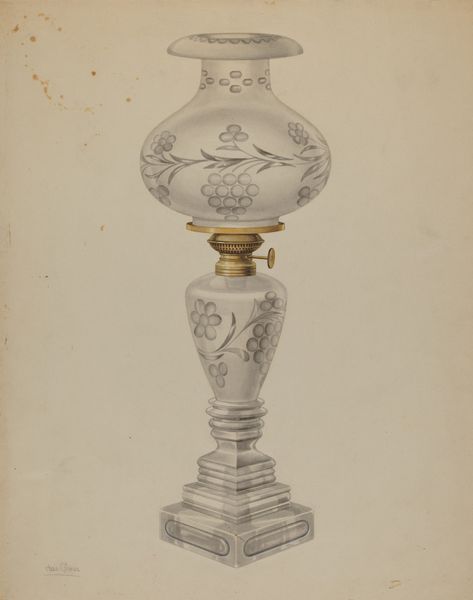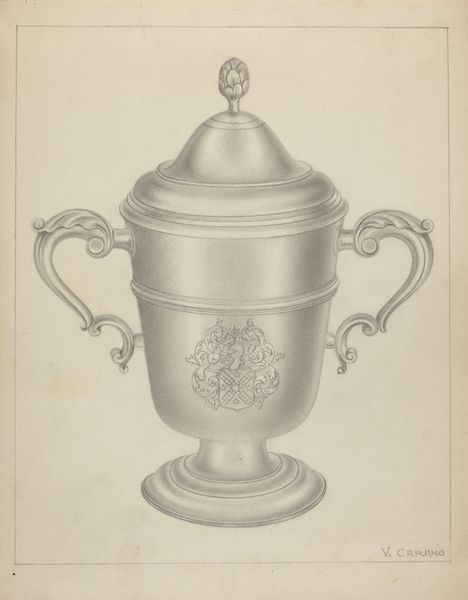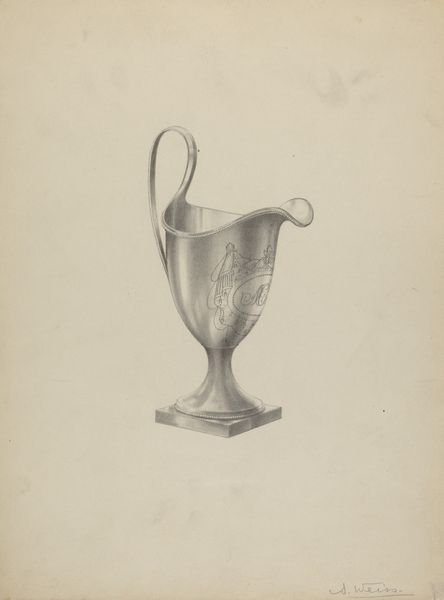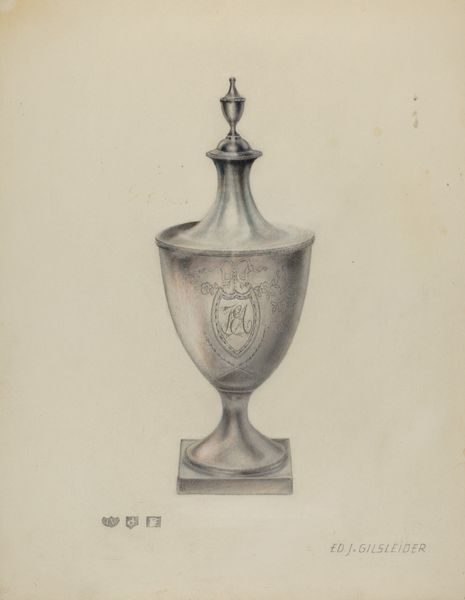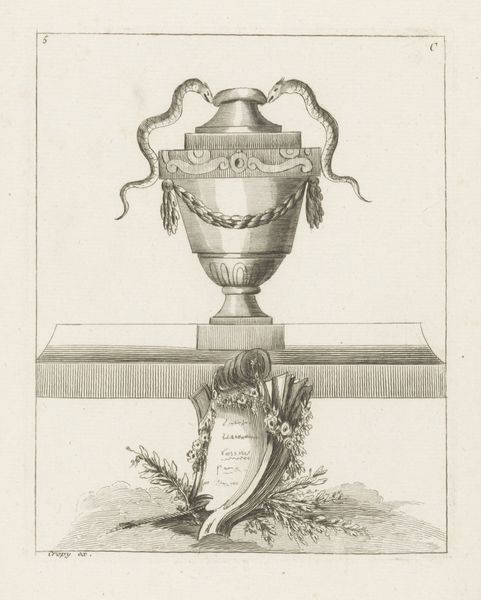
drawing, pencil, graphite
#
drawing
#
pencil
#
graphite
#
academic-art
Dimensions: overall: 30.3 x 22.9 cm (11 15/16 x 9 in.)
Copyright: National Gallery of Art: CC0 1.0
Curator: It reminds me of hushed drawing rooms, candlelight, and inherited secrets. It's quite restrained but speaks of a certain quiet opulence. Editor: Well, let's stir some intrigue then. Here we have Vincent Carano's "Silver Sugar Urn," rendered around 1936. It’s graphite on paper. The detail, I think, belies the commonness of the material. Curator: Absolutely. There is something rather unsettling to me in this object. The sheen on the surface is amazing in the simplicity of a monochromatic study. Yet what I find very peculiar is that the family crest seems oddly... anonymous. It whispers "legacy" without declaring it. I am wondering who it might be representing here, whose identity is subtly masked or being reimagined. It suggests narratives around status and hidden genealogies. Editor: Now that's the hook! So, sugar urns—already emblems of wealth and taste, right? To take such an artifact and then obscure it slightly, or at least genericize it? It is almost subversive! Is this like punk silverware? I bet Carano was having a dig at some of the pretensions of the upper crust with such restraint in its depiction. A memento mori of sugar...or maybe it's the American dream gone slightly askew in the Depression era? Curator: Precisely! This almost academic-art approach to something domestic, commonplace, raises questions about function versus status. We know objects hold collective meanings and stories and he's making me aware of all that baggage. It also is amazing that it manages such subtle details and shading within this monochrome medium; what we often read as light source, tonal relations, form, ends up communicating cultural tension and narrative. It creates that psychological weight of continuity of memories. Editor: So much communicated, by a pot, and some clever pencil work! Thanks, I might go sharpen my own drawing pencils after this...or find a decadent dessert somewhere. Curator: Yes! And that the everyday domestic, as art object, offers space for endless fascination.
Comments
No comments
Be the first to comment and join the conversation on the ultimate creative platform.
